Monacor ECM-306B/SW Handleiding
Bekijk gratis de handleiding van Monacor ECM-306B/SW (2 pagina’s), behorend tot de categorie Microfoon. Deze gids werd als nuttig beoordeeld door 64 mensen en kreeg gemiddeld 5.0 sterren uit 32.5 reviews. Heb je een vraag over Monacor ECM-306B/SW of wil je andere gebruikers van dit product iets vragen? Stel een vraag
Pagina 1/2

MONACOR INTERNATIONAL GmbH & Co. KG • Zum Falsch 36 • 28307 Bremen • Germany Copyright© by MONACOR INTERNATIONAL. All rights reserved. A-1050.99.03.01.2020
ECM-306B / SW Bestell-Nr. • Order No. 0235790
ECM-306B / WS Bestell-Nr. • Order No. 0235800
ELECTRONICS FOR SPECIALISTS ELECTRONICS FOR SPECIALISTS ELECTRONICS FOR SPECIALISTS ELECTRONICS FOR SPECIALISTS ELECTRONICS FOR SPECIALISTS ELECTRONICS FOR SPECIALISTS ELECTRONICS FOR
2
3
1
0
5
4
Boundary Microphone
These instructions are intended for
users with basic knowledge of audio
technology. Please read these instruc-
tions carefully prior to operation and
keep them for later reference.
1 Applications
This boundary microphone is a robust electret
microphone with semi-supercardioid char-
acteristic. It is particularly useful as a desk
microphone and ideally suited for picking
up speech, e. g. at conferences, interviews,
theatre performances, lectures, etc. The mi-
crophone is operated with a phantom power
in the range of
⎓
17 – 48 V.
2 Important Notes
The microphone corresponds to all relevant
directives of the EU and is therefore marked
with .
•
The microphone is suitable for indoor use
only. Protect it against dripping water,
splash water and high air humidity. The
admissible ambient temperature range is
0 – 40 °C.
•
For cleaning only use a dry, soft cloth;
never use water or chemicals.
•
No guarantee claims for the microphone
and no liability for any resulting personal
damage or material damage will be ac-
cepted if the microphone is used for other
purposes than originally intended, if it is
not correctly connected or operated, or if
it is not repaired in an expert way.
If the microphone is to be put out
of operation definitively, dispose
of the in accordance microphone
with local regulations.
3 Operation
1) -Lay the microphone flat on the desk. How
ever, it may also be suspended on a wall via
the mounting holes (5).
2) Connect the mini XLR plug of the supplied
cable to the jack (1) of the microphone
and the XLR plug to a balanced XLR micro-
phone input on the audio unit (e. g. mixer,
amplifier). If the microphone input does
not provide any phantom power in the
range of
⎓
17 – 48 V, connect the micro-
phone to the input via a phantom power
supply unit (e. g. EMA-3 or EMA-200).
3) Switch on the microphone with the button
(2). The blue power indicator (3) lights
up.
4) Set the DIP switches (4) as required:
– With the left DIP switch, the output level
can be attenuated by 10 dB (position
“−10”) when the microphone input is
overloaded.
– Low frequencies may be suppressed with
the right DIP switch (position “ ”), e. g.
to improve speech intelligibility and to
reduce rumble noise.
5) After operation, switch off the micro-
phone with the button .
4 Specifications
Type: . . . . . . . . . . electret microphone
Pick-up pattern: . semi-supercardioid
Frequency range: 30 – 20 000 Hz
Sensitivity: . . . . . . 22 mV/ Pa at 1 kHz
Impedance: . . . . . 250 Ω
Max. SPL: . . . . . . 130 dB
Power supply: . . . phantom power
⎓
17 – 48 V
Dimensions: . . . . 90 × 25 × 90 mm
Weight: . . . . . . . 200 g
Connection: mini XLR, bal. . . . .
Accessories: . . . . 6 m connection cable with
mini XLR / XLR connectors
Subject to technical modification.
Grenzflächenmikrofon
Diese Anleitung richtet sich an Benut-
zer mit Grundkenntnissen in der Audio-
technik. Bitte lesen Sie die Anleitung vor
dem Betrieb gründlich durch und heben
Sie sie für ein späteres Nachlesen auf.
1 Einsatzmöglichkeiten
Dieses Grenzflächenmikrofon ist ein robustes
Elektret-Mikrofon mit Halb-Supernierencha-
rakteristik. Es lässt sich besonders gut als
Tischmikrofon einsetzen und eignet sich op-
timal für die Sprachabnahme, z. B. bei Kon-
ferenzen, Interviews, Theatervorführungen,
Ansprachen etc. Für den Betrieb benötigt das
Mikrofon eine Phantomspeisung im Bereich
von
⎓
17 – 48 V.
2 Wichtige Hinweise
Das Mikrofon entspricht allen relevanten
Richtlinien der EU und trägt deshalb das
-Zeichen.
•
Das Mikrofon ist nur zur Verwendung im
Innenbereich geeignet. Schützen Sie es vor
Tropf- und Spritzwasser sowie vor hoher
Luftfeuchtigkeit. Der zulässige Einsatztem-
peraturbereich beträgt 0 – 40 °C.
•
Verwenden Sie zum Reinigen nur ein tro-
ckenes, weiches Tuch, auf keinen Fall Che-
mikalien oder Wasser.
•
Wird das Mikrofon zweckentfremdet, nicht
richtig angeschlossen, falsch bedient oder
nicht fachgerecht repariert, kann keine
Haftung für daraus resultierende Sach-
oder Personenschäden und keine Garantie
für das Mikrofon übernommen werden.
Soll das Mikrofon endgültig aus
dem Betrieb genommen werden,
entsorgen Sie es gemäß den örtli-
chen Vorschriften.
3 Inbetriebnahme
1) Das Mikrofon flach auf den Tisch legen. Es
kann aber auch über die Montagelöcher(5)
an einer Wand aufgehängt werden.
2) -Den Mini-XLR-Stecker des beiliegenden An
schlusskabels in die Buchse (1) des Mikro-
fons stecken und den XLR-Stecker in einen
symmetrischen XLR-Mikrofoneingang am
Audiogerät (z. B. Mischpult, Verstärker).
Stellt der Mikrofoneingang keine Phan-
tomspeisung im Bereich von
⎓
17 – 48 V
bereit, das Mikrofon über ein Phantom-
speisegerät (z. B. EMA-3 oder EMA-200)
an den Eingang anschließen.
3) Das Mikrofon mit der Taste (2) einschal-
ten. Die blaue Betriebsanzeige (3) leuchtet.
4) Die DIP-Schalter (4) nach Bedarf einstellen:
– Mit dem linken DIP-Schalter lässt sich der
Ausgangspegel um 10 dB abschwächen
(Position „−10“), wenn der Mikrofon-
eingang übersteuert wird.
– Mit dem rechten DIP-Schalter können
tiefe Töne unterdrückt werden (Posi-
tion„ “), um z. B. die Sprachverständ-
lichkeit zu verbessern und um Rumpel-
geräusche zu verringern.
5) Nach dem Betrieb das Mikrofon mit der
Taste ausschalten.
4 Technische Daten
Typ: . . . . . . . . . . . . . . Elektret-Mikrofon
Richtcharakteristik: . . Halb-Superniere
Frequenzbereich: . . . 30 – 20 000 Hz
Empfindlichkeit: . . . . 22 mV/ Pa bei 1 kHz
Impedanz: . . . . . . . . . 250 Ω
Max. Schalldruck: . . . 130 dB
Stromversorgung: . . . Phantomspeisung
⎓
17 – 48 V
Abmessungen: . . . . . 90 × 25 × 90 mm
Gewicht: . . . . . . . . . . 200 g
Anschluss: . . . . . . . . . Mini-XLR, sym.
Zubehör: . . . . . . . . . . 6-m-Anschlusskabel
Mini-XLR / XLR
Änderungen vorbehalten
Deutsch
English

MONACOR INTERNATIONAL GmbH & Co. KG • Zum Falsch 36 • 28307 Bremen • Germany Copyright© by MONACOR INTERNATIONAL. All rights reserved. A-1050.99.03.01.2020
ELECTRONICS FOR SPECIALISTS ELECTRONICS FOR SPECIALISTS ELECTRONICS FOR SPECIALISTS ELECTRONICS FOR SPECIALISTS ELECTRONICS FOR SPECIALISTS ELECTRONICS FOR SPECIALISTS ELECTRONICS FOR
2
3
1
0
5
4
Microphone de surface
Cette notice s’adresse aux utilisateurs
avec des connaissances de base en
audio. Veuillez lire la présente notice
avec attention avant le fonctionnement
et conservez-la pour pouvoir vous y
reporter ultérieurement.
1 Possibilités d’utilisation
Ce microphone de surface est un microphone
électret solide, semi super-cardioïde. Il peut
être utilisé très bien comme microphone de
table et est idéal pour capter la parole, par
exemple lors de conférences, interviews, re-
présentations théâtrales, allocutions etc. Pour
le fonctionnement, le microphone nécessite
une alimentation fantôme dans la plage de
⎓
17 – 48 V.
2 Conseils importants
Le microphone répond à toutes les directives
nécessaires de l’Union européenne et porte
donc le symbole .
•
Le microphone n’est conçu que pour une
utilisation en intérieur. Protégez-le des
éclaboussures, de tout type de projections
d’eau et d’une humidité d‘air élevée. La
plage de température ambiante admissible
est de 0 – 40 °C.
•
Pour le nettoyage, utilisez uniquement un
chiffon sec et doux, en aucun cas de pro-
duits chimiques ou d’eau.
•
Nous déclinons toute responsabilité en
cas de dommages matériels ou corporels
résultants si le microphone est utilisé dans
un but autre que celui pour lequel il a été
conçu, s’il n’est pas correctement branché
ou utilisé, ou s‘il n’est pas réparé par une
personne habilitée ; en outre, la garantie
deviendrait caduque.
Lorsque le microphone est défini-
tivement retiré du service, élimi-
nez-le conformément aux direc-
tives locales.
CARTONS ET EMBALLAGE
PAPIER À TRIER
3 Utilisation
1) Placez le microphone à plat sur la table. Il
peut également être suspendu sur un mur
via les trous de montage (5).
2) -Reliez la fiche mini XLR du cordon de liai
son livré à la prise (1) du microphone et
la fiche XLR à une entrée micro XLR sy-
métrique sur l’appareil audio (par exemple
table de mixage, amplificateur). Si l’en-
trée micro ne fournit pas d‘alimen tation
fantôme dans la plage de
⎓
17 – 48 V,
reliez le microphone à l‘entrée via une ali-
mentation fantôme (par exemple EMA-3
ou EMA-200).
3) Allumez le microphone avec la touche (2).
Le témoin bleu de fonctionnement(3) brille.
4) Selon les besoins, réglez les interrupteurs
DIP (4) :
– Avec l’interrupteur DIP gauche, vous
pouvez diminuer le niveau de sortie de
10 dB (position « −10 ») lorsque l’entrée
micro est en surcharge.
– Avec l’interrupteur DIP droit, vous pou-
vez éliminer les sons graves (position
« »), par exemple pour améliorer la
compréhension des paroles et diminuer
les bruits de grondements.
5) -Après le fonctionnement, éteignez le mi
crophone avec la touche .
4 Caractéristiques techniques
Type : . . . . . . . . . microphone électret
Caractéristique : . semi super-cardioïde
Bande passante : . 30 – 20 000 Hz
Sensibilité : . . . . . 22 mV/ Pa à 1 kHz
Impédance : . . . . 250 Ω
Pression sonore
maximale : . . . . . 130 dB
Alimentation : . . . alimentation fantôme
⎓
17 – 48 V
Dimensions: . . . . 90 × 25 × 90 mm
Poids : . . . . . . . . . 200 g
Connexion : mini XLR, sym. . . . .
Accessoire : . . . . . cordon 6 m, mini XLR / XLR
Tout droit de modification réservé.
Microfono ambientale
Queste istruzioni sono rivolte a utenti
con conoscenze base nella tecnica
audio. Vi preghiamo di leggerle atten-
tamente prima della messa in funzione
e di conservarle per un uso futuro.
1 Possibilità d’impiego
Questo microfono ambientale è un micro-
fono robusto a elettrete con caratteristica
semi-supercardioide. È adatto in modo par-
ticolare come microfono da tavolo ed è ot-
timale per la ripresa di lingua parlata, p. es.
in occasione di conferenze, interviste, rap-
presentazioni teatrali, discorsi ecc. Per l’uso,
il microfono richiede un’alimentazione phan-
tom nel campo
⎓
17 – 48 V.
2 Avvertenze importanti
Il microfono è conforme a tutte le direttive
rilevanti dell’UE e pertanto porta la sigla .
•
Il microfono è previsto solo per l’uso all’in-
terno di locali. Proteggerlo dall’acqua goc-
ciolante e dagli spruzzi d’acqua nonché da
alta umidità dell’aria. La temperatura d’e-
sercizio ammessa è 0 – 40 °C.
•
Per la pulizia usare solo un panno morbido,
asciutto; non impiegare in nessun caso
acqua o prodotti chimici.
•
Nel caso d’uso improprio, di collegamenti
sbagliati, d’impiego scorretto o di ripara-
zione non a regola d’arte del microfono,
non si assume nessuna responsabilità per
eventuali danni consequenziali a persone
o a cose e non si assume nessuna garanzia
per il microfono.
Se si desidera eliminare il micro-
fono definitivamente, consegnarlo
per lo smaltimento ad un’istitu-
zione locale per il riciclaggio.
3 Messa in funzione
1) Posare il microfono sul tavolo. Tuttavia, è
possibile appenderlo anche alla parete per
mezzo dei fori di montaggio (5).
2) Inserire il connettore mini-XLR del cavo di
collegamento in dotazione nella presa(1)
del microfono e inserire il connettore XLR
in un ingresso microfono XLR bilanciato
dell’apparecchio audio (p. es. mixer, amplifi-
catore). Se l’ingresso microfono non mette
a disposizione un’alimentazione phantom
nel campo
⎓
17 – 48 V, collegare il micro-
fono con l’ingresso usando un alimentatore
phantom (p. es. EMA-3 o EMA-200).
3) Accendere il microfono con il tasto (2). Si
accende la spia blu di funzionamento (3).
4) Regolare i dip-switch (4) secondo necessità:
– Con il dip-switch di sinistra è possibile
attenuare il livello d’uscita di 10 dB (po-
sizione “−10”), se l’ingresso microfono
è sovrapilotato.
– Con il dip-switch di destra si possono
sopprimere le frequenze basse (posi-
zione “ ”), p. es. per migliorare la
comprensione della lingua parlata e per
ridurre i rumori di calpestio.
5) Dopo l’uso spegnere il microfono con il
tasto .
4 Dati tecnici
Tipo: . . . . . . . . . . . . . . microfono a elettrete
Caratteristica
direzionale: . . . . . . . . . semi-supercardioide
Gamma di frequenze: . 30 – 20 000 Hz
Sensibilità: . . . . . . . . . 22 mV/ Pa con 1 kHz
Impedenza: . . . . . . . . . 250 Ω
Pressione sonora max.: 130 dB
Alimentazione: . . . . . . alimentazione phan-
tom
⎓
17 – 48 V
Dimensioni: . . . . . . . . . 90 × 25 × 90 mm
Peso: . . . . . . . . . . . . . . 200 g
Contatto: mini-XLR, bil. . . . . . . . . .
Accessori: . . . . . . . . . . cavo di collegamento
di 6 m, mini-XLR / XLR
Con riserva di modifiche tecniche.
ECM-306B / SW Réf. num. • Codice 0235790
ECM-306B / WS Réf. num. • Codice 0235800
Français
Italiano
Product specificaties
| Merk: | Monacor |
| Categorie: | Microfoon |
| Model: | ECM-306B/SW |
| Kleur van het product: | Zwart |
| Breedte: | 90 mm |
| Diepte: | 16 mm |
| Hoogte: | 90 mm |
| Snoerlengte: | 6 m |
| Soort: | Microfoon voor interviews |
| Connectiviteitstechnologie: | Bedraad |
| Aansluiting: | mini XLR (3-pin) |
| Microphone direction type: | Supercardioïde |
| Gevoeligheid microfoon: | 130 dB |
| Frequentie microfoon: | 30 - 20000 Hz |
| Microphone input impedance: | 250 Ohm |
| Bedrijfstemperatuur (T-T): | 0 - 40 °C |
| Gewicht microfoon: | 200 g |
Heb je hulp nodig?
Als je hulp nodig hebt met Monacor ECM-306B/SW stel dan hieronder een vraag en andere gebruikers zullen je antwoorden
Handleiding Microfoon Monacor

22 Juni 2023

19 Juni 2023

19 Juni 2023

19 Juni 2023

18 Juni 2023

16 Juni 2023

15 Juni 2023

11 Juni 2023

11 Juni 2023

11 Juni 2023
Handleiding Microfoon
- MKC
- Omnitronic
- T'nB
- QFX
- Srhythm
- Behringer
- Brigmton
- MEINIAO
- Takstar
- Manhattan
- Moman
- Sontronics
- Natec
- Icom
- Tascam
Nieuwste handleidingen voor Microfoon
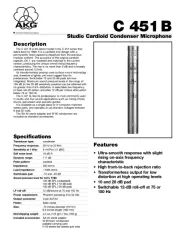
2 Augustus 2025
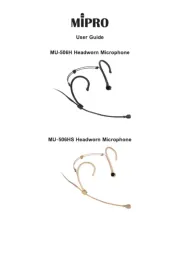
29 Juli 2025
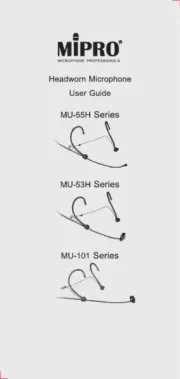
29 Juli 2025
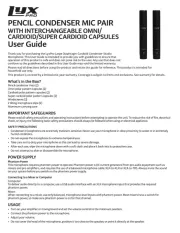
29 Juli 2025

29 Juli 2025
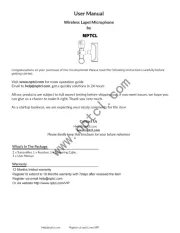
28 Juli 2025
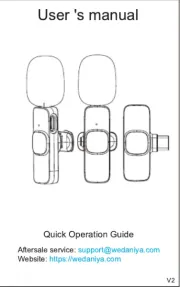
28 Juli 2025
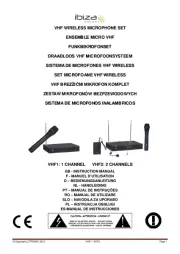
28 Juli 2025
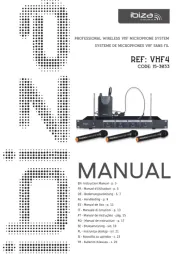
28 Juli 2025
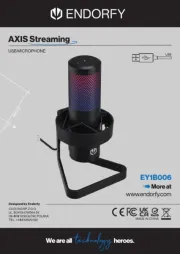
23 Juli 2025